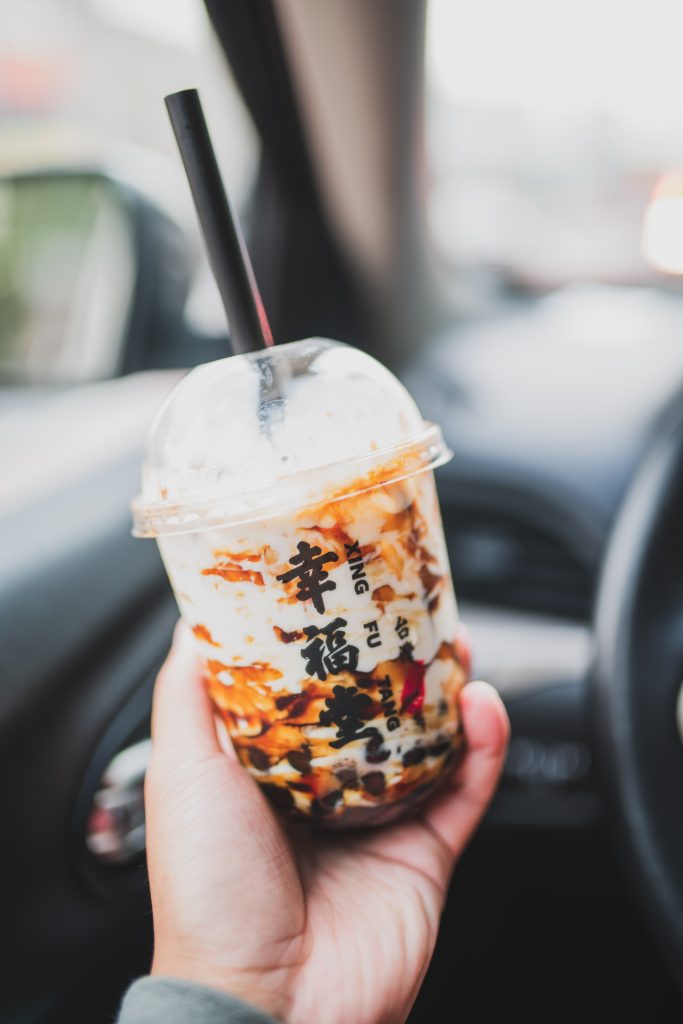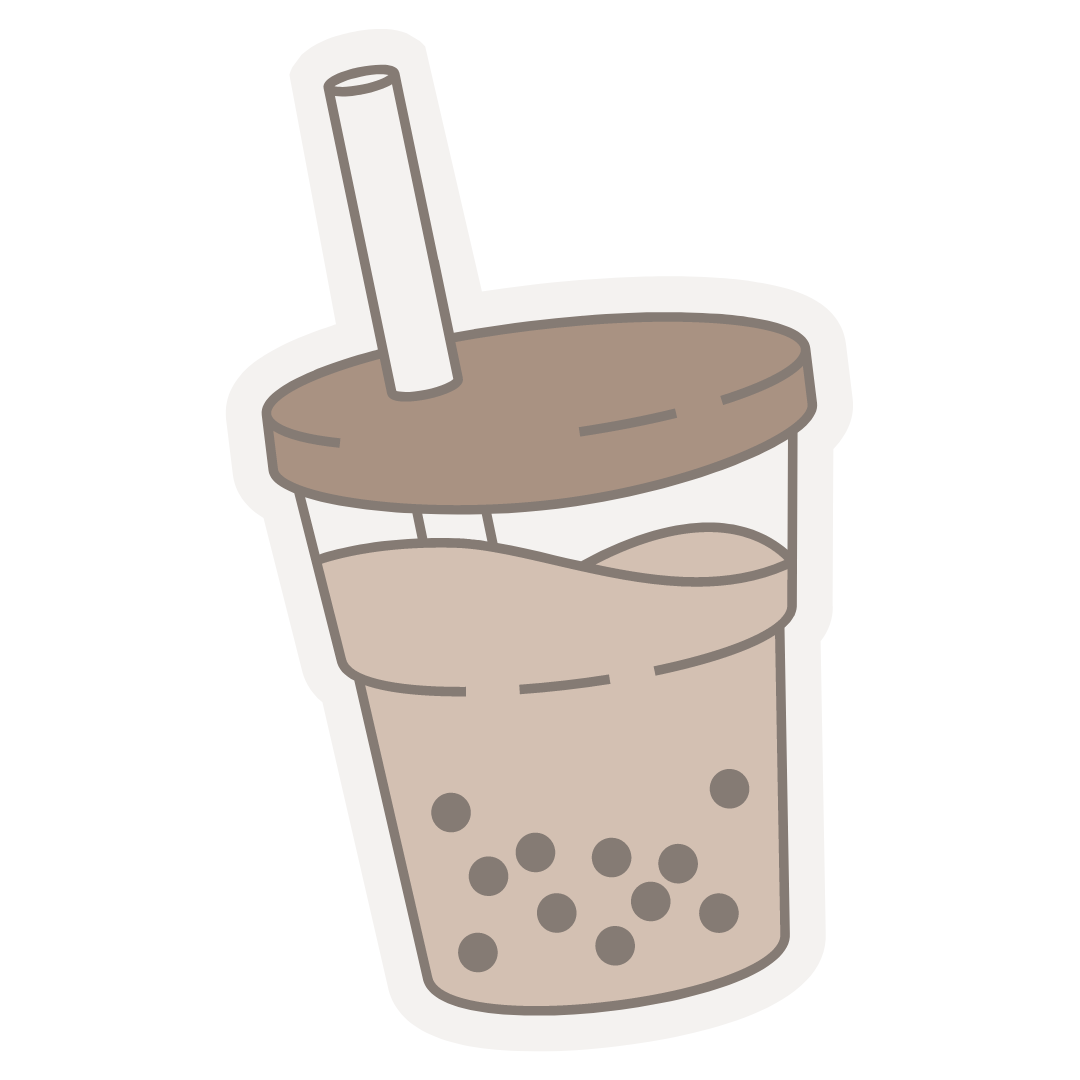
Find Perth's Best Bubble Tea!
Welcome to Perth Bubble Tea, your ultimate resource for all things bubble tea in the beautiful city of Perth! Whether you're a passionate bubble tea enthusiast or someone looking to explore the vibrant world of this delightful beverage, you've come to the right place.
This website is your go-to destination for discovering the best bubble tea spots in Perth. Our dedicated team of bubble tea aficionados has scoured the city to bring you an extensive collection of reviews, recommendations, and insider tips.
Visit us every week for up-to-date BBT content!
What is Bubble Tea?
Chances are if you've stumbled across this website you're quite aware of what bubble tea is! If you've been living under a rock... Here's your answer!
Bubble tea, also known as pearl milk tea or boba tea, is a popular Taiwanese beverage that originated in the 1980s and has gained worldwide popularity. It typically consists of a base tea, milk or fruit juice, sweetener, and various toppings. The distinguishing feature of bubble tea is the addition of chewy tapioca pearls or boba, which are small, round, and translucent balls made from tapioca starch.
The tapioca pearls, or boba, are cooked separately and then added to the drink. These chewy pearls provide a unique texture and are typically consumed through a wide straw, allowing you to enjoy the tea and pearls together. Apart from tapioca pearls, bubble tea may also include other toppings like fruit jellies, popping boba (fruit juice-filled spheres that burst in the mouth), or grass jelly.
Bubble tea comes in a variety of flavors and combinations, allowing for customisation based on personal preferences. Some popular variations include classic milk tea, taro milk tea, fruity flavors like mango or strawberry, and even non-tea options like coffee or chocolate-based drinks.
Want to contribute to the BBT blog?
Calling all bubble tea enthusiasts and budding writers! Are you passionate about bubble tea and want to share your knowledge, experiences, or creative ideas with our growing community? We invite you to contribute as a guest writer to the Perth Bubble Tea Guide blog. Whether you have a personal bubble tea story to tell, a review of a hidden gem in Perth, a unique recipe to share, or even an exploration of the cultural significance of bubble tea, we'd love to hear from you!
Bubble Tea FAQs
Bubble tea, also known as boba tea or pearl milk tea, is a popular beverage that originated in Taiwan. It typically consists of the following main ingredients:
- Tea: Traditionally, bubble tea is made using black tea as its base. However, variations may also include green tea, oolong tea, or fruit teas. The tea is brewed and cooled before being used in the drink.
- Milk: Bubble tea often includes milk, which gives it a creamy and smooth texture. Common choices include regular milk, condensed milk, or non-dairy alternatives such as soy milk or almond milk.
- Sweetener: Sugar or syrup is commonly added to bubble tea to enhance its flavor. The amount of sweetener can be adjusted based on personal preference.
- Tapioca pearls: These are the iconic "bubbles" in bubble tea. Tapioca pearls are made from the starch extracted from cassava root. They are cooked until they become chewy and are then added to the tea. The pearls are often black but can also be colored or flavored.
Additional optional ingredients and variations can be added to bubble tea, including:
- Fruit or fruit syrups: Fresh fruit slices or flavored syrups are sometimes added to give the tea a fruity taste. Common options include mango, strawberry, lychee, or passion fruit.
- Jelly: Small cubes of flavored jelly can be added to bubble tea to provide a different texture and taste. Popular choices include grass jelly or coconut jelly.
- Toppings: Some bubble tea shops offer a variety of toppings, such as aloe vera, red beans, or pudding, which can be added for extra flavor and texture.
It's important to note that bubble tea recipes can vary, and different shops or regions may have their own unique twists and variations on the traditional ingredients.
Bubble tea can be enjoyed as an occasional treat, but it is important to note that its healthiness can vary depending on the specific ingredients and preparation methods. Here are some factors to consider:
Nutritional Content: Bubble tea typically contains tea, which can provide antioxidants and certain health benefits. However, it often contains added sugars and may have high calorie content, especially if made with sweetened milk or syrups. The tapioca pearls also contribute to the calorie and carbohydrate content of the drink.
Sugar Content: Sweeteners like sugar or syrup are commonly added to bubble tea for flavour. These can significantly increase the sugar content, and excessive consumption of sugary drinks may contribute to weight gain and other health issues. Opting for less sweetened versions, using natural sweeteners, or requesting reduced sugar options can help reduce the overall sugar content.
Tapioca Pearls: The tapioca pearls used in bubble tea are made from cassava starch, which provides carbohydrates and calories. They are often cooked with additional sweeteners. While tapioca pearls are generally safe to consume, they are not a significant source of nutritional value and can add extra calories to the beverage.
Additives and Toppings: Additional toppings like flavou
Bubble tea can be enjoyed as an occasional treat, but it is important to note that its healthiness can vary depending on the specific ingredients and preparation methods. Here are some factors to consider:
-
Nutritional Content: Bubble tea typically contains tea, which can provide antioxidants and certain health benefits. However, it often contains added sugars and may have high calorie content, especially if made with sweetened milk or syrups. The tapioca pearls also contribute to the calorie and carbohydrate content of the drink.
-
Sugar Content: Sweeteners like sugar or syrup are commonly added to bubble tea for flavor. These can significantly increase the sugar content, and excessive consumption of sugary drinks may contribute to weight gain and other health issues. Opting for less sweetened versions, using natural sweeteners, or requesting reduced sugar options can help reduce the overall sugar content.
-
Tapioca Pearls: The tapioca pearls used in bubble tea are made from cassava starch, which provides carbohydrates and calories. They are often cooked with additional sweeteners. While tapioca pearls are generally safe to consume, they are not a significant source of nutritional value and can add extra calories to the beverage.
-
Additives and Toppings: Additional toppings like flavored jellies or syrups can increase the calorie and sugar content of bubble tea. These toppings may also contain artificial additives or colorings, which some individuals may prefer to avoid.
To make bubble tea a healthier choice:
- Opt for unsweetened or lightly sweetened tea options.
- Choose low-fat or non-dairy milk alternatives.
- Limit the amount of added sugars or syrups.
- Request reduced sugar versions or customize the sweetness level.
- Consider alternative toppings like fresh fruit or aloe vera instead of higher calorie options.
red jellies or syrups can increase the calorie and sugar content of bubble tea. These toppings may also contain artificial additives or colorings, which some individuals may prefer to avoid.
To make bubble tea a healthier choice:
- Opt for unsweetened or lightly sweetened tea options.
- Choose low-fat or non-dairy milk alternatives.
- Limit the amount of added sugars or syrups.
- Request reduced sugar versions or customise the sweetness level.
- Consider alternative toppings like fresh fruit or aloe vera instead of higher-calorie options.
The popularity of bubble tea flavours can vary depending on the region and individual preferences. However, some flavors are commonly found and enjoyed in many places. Here are a few popular bubble tea flavors:
Classic Milk Tea: This is the original and most traditional flavor of bubble tea. It typically consists of black tea mixed with milk and sweetener. The creamy and slightly sweet taste of milk tea is a favorite among bubble tea enthusiasts.
Taro: Taro bubble tea is made from taro root, which has a mildly sweet and nutty flavor. It often has a purple hue and a creamy texture. Taro bubble tea is popular for its unique taste and appealing color.
Matcha: Matcha bubble tea is made with powdered green tea, providing a vibrant green color and a distinct earthy flavor. Matcha is known for its health benefits and is enjoyed by those who appreciate its rich and slightly bitter taste.
Fruit Flavours: Many bubble tea shops offer a variety of fruit-flavored options. Some popular choices include strawberry, mango, lychee, passion fruit, or peach. These flavors can be refreshing and provide a fruity twist to the traditional bubble tea.
Brown Sugar Milk: This trendy flavor features a combination of brown sugar syrup, milk, and sometimes a touch of caramel or burnt sugar flavor. It offers a rich and indulgent taste that has gained popularity in recent years.
It's worth noting that bubble tea shops often offer a wide range of flavors and combinations, allowing customers to customise their drinks with different teas, milk choices, sweeteners, and toppings. The most popular flavour can vary based on local preferences and trends, so it's always exciting to explore the diverse range of options available.
The "bubbles" in bubble tea refer to the tapioca pearls, also known as boba, that are added to the drink. Tapioca pearls are made from the starch extracted from the cassava root. They are shaped into small, chewy balls that resemble bubbles and are typically black in colour. These pearls are cooked until they become soft and slightly gelatinous, creating a unique texture in the beverage.
The tapioca pearls used in bubble tea have a neutral flavor on their own, but they take on the taste of the tea and other ingredients in the drink. They add a fun and enjoyable element to bubble tea, providing a satisfying chewiness that contrasts with the smoothness of the tea and milk.
While black tapioca pearls are the most common and iconic, there are also variations available. Tapioca pearls can be colored or flavored using natural ingredients such as fruits or vegetables, resulting in different shades and tastes. For example, you might come across bubble tea with pearls that are white, pink, green, or even translucent, offering a visual and flavor twist to the traditional bubble tea experience.
Bubble tea, also known as boba tea or pearl milk tea, originated in Taiwan in the early 1980s. The exact origin story is attributed to a tea house called Chun Shui Tang in Taichung, Taiwan. It is said that the owner, Liu Han-Chieh, experimented by adding tapioca pearls into iced tea. This unique combination of tea, milk, and tapioca pearls quickly gained popularity and became known as "bubble tea" due to the bubbles that form when the drink is shaken.
Initially, bubble tea was a simple combination of black tea, milk, and tapioca pearls. However, over time, variations with different types of tea, flavors, and toppings emerged, allowing for a wide range of choices and customization.
From Taiwan, bubble tea gradually spread to other Asian countries such as Hong Kong, China, and Singapore. In the late 1990s and early 2000s, bubble tea made its way to the United States, Canada and Australia, where it gained a significant following. Today, bubble tea has become a global phenomenon, with numerous bubble tea shops found in various countries around the world, offering a diverse array of flavours and combinations.


